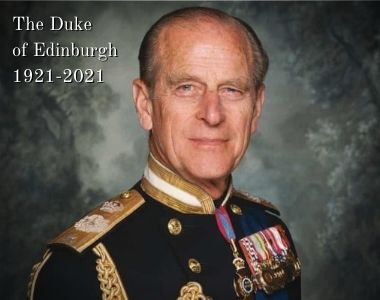In January 1974 a group of warships, sailing under the flag of Flag Officer Second Flotilla, departed on a nine month deployment to Australia and the Far East. Task Group 317.1, as it was known, comprised the flagship FIFE, escorted by the frigates ARGONAUT, ARAIDNE, DANAE, SCYLLA and LONDONDERRY, supported by the RFAs TIDESPRING and TARBATNESS.
On 17 September 1974 the helicopter cruiser BLAKE sailed from Portsmouth accompanied by the frigates LOWESTOFT and FALMOUTH and the RFAs STROMNESS and OLNA. Later that day the group rendezvoused with the submarine WARSPITE, three more frigates, ACHILLES, DIOMEDE and LEANDER, and the RFA GREEN ROVER. Once assembled, Task Group 317.2, under the flag of Flag Officer First Flotilla, set course for Gibraltar at the start of a nine month deployment to the Far East.
At the time, this new policy of group deployments was seen as having many benefits over the traditional solo deployment or patrol. The ships could operate over an extended period as a single unit with huge benefits in training and proficiency. By ranging over the oceans, the group could participate in international exercises and training, benefitting from experience and tactics used by other nations. There were sufficient ships within the group that they could exercise as a single unit or split into smaller units tasked against each other. The impact of such a large group of ships on port calls was immense and gave the RN an international stage. The sheer number of ships also allowed for many visits by individual ships to smaller international ports rarely visited and thereby raising the RN’s profile internationally.
The Group Deployment policy was to see cruiser or destroyer led task groups deploy annually to the Pacific, Middle East or Atlantic, through to the early 1980s when they were cancelled to save fuel. Of course 1982 saw the largest ever deployment to the South Atlantic to retake the Falklands - although this was an operational deployment, the training gleaned over the previous decade in operating large task groups at distance and away from base support was of great benefit.
Throughout the 1980s and 1990s the deployments continued, usually led by an Invincible class carrier, through the Orient series of deployments, Global in 1986, Outback in 1988 and Endeavour in 1990. With the end of the Cold War and operational commitments elsewhere, the group concept deployment was scaled back as smaller operational deployments were required to supply an ongoing presence in both the Adriatic and the Gulf. In recent years annual deployments have returned with an emphasis on amphibious warfare and the ability to move forces and assets rapidly by sea. From Argonaut in 1999, through Aurora. Orion and Cougar, amphibious task groups have deployed to demonstrate their capability to deploy at short notice in response to global needs.
The latest iteration of the amphibious TG has been deployment of OCEAN, BULWARK, RFA MOUNTS BAY and MV EDDYSTONE as the inaugural Joint Expeditionary Force (Maritime) a new structure to replace the previous Response Force Task Group. While primarily poised to conduct amphibious operations, JEF(M) is capable of undertaking a diverse range of activities such as evacuation operations, disaster relief or humanitarian aid.
However, the deployments of today cannot be as effective as those of the 1970s and 1980s. While earlier Task Groups were fully self sufficient and operated as a unit for up to nine-months, the current JEF(M) will rarely operate as a four ship group. MOUNTS BAY is to rejoin Operation Sophia in the eastern Mediterranean and OCEAN is to deploy east of Suez to take over the role of CTF 150 from the US Navy. Of greater concern is that the group has no dedicated tankers or support ships, no heavy guns and is totally lacking in submarine support or surface escorts. The MoD note that the group will be joined by destroyers and frigates as and when required - that is more likely to mean as and when they sail into an area where one of the RN’s few destroyers or frigates is operating. Given the latest news that the situation in Yemen is escalating to maritime targets, sailing a lightly armed and defended amphibious group through those very waters must raise concerns. The greater worry is that if the RN are unable to corral sufficient ships to protect high value amphibious assets how will they cope with two large aircraft carriers in a few short years time?
Steve Bush, Editor Warship World

